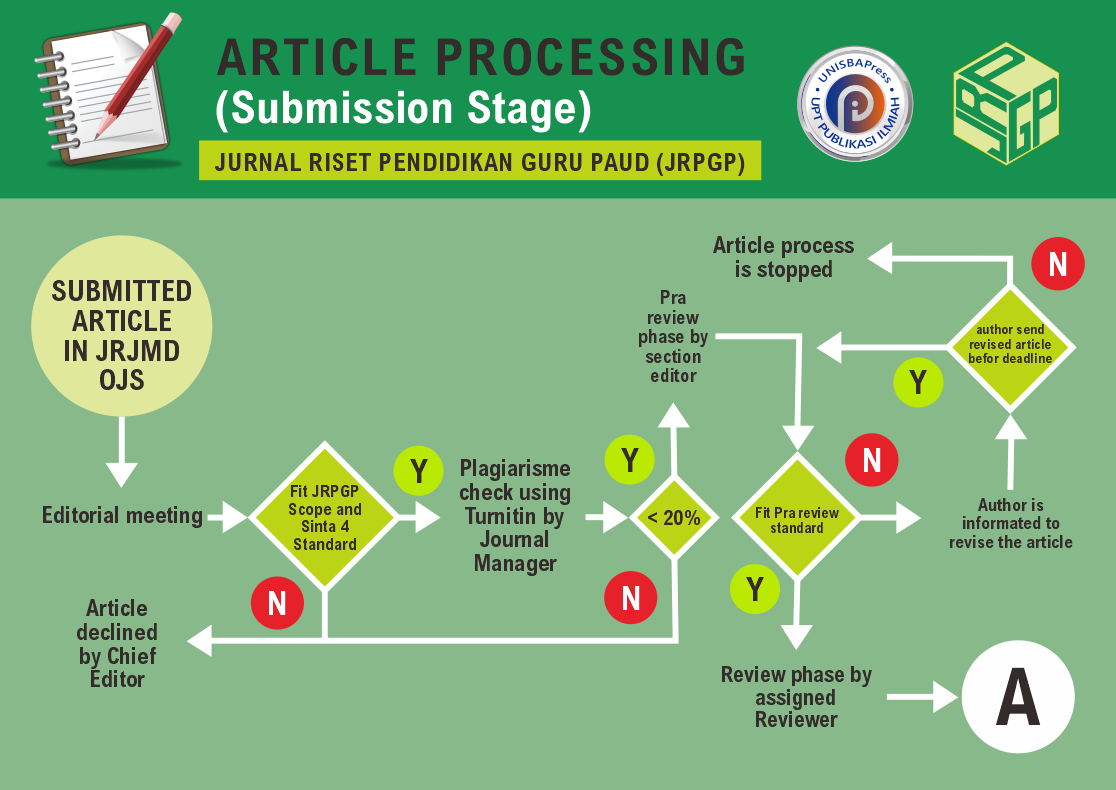Pengaruh Kegiatan Sains Pencampuran Warna untuk Mengembangkan Kemampuan Pemecahan Masalah Kelompok A2
DOI:
https://doi.org/10.29313/jrpgp.vi.716Keywords:
Kemampuan Pemecahan Masalah, Pencampuran WarnaAbstract
Abstract. This research purpose are (1) to find out children problem solving abilities before applying color mixing activity; (2) to understand the process of the color mixing activity, (3) to find out children problem solving abilities after the implementation of color mixing activity, (4) to find out the effect of the activities of the science of mixing colors to develop problem-solving abilities in children. The research approach used in this research is quantitative approach. The type of research used is quasi experiment with pre-test and post-test group control design. The respondents in this study consisted of 14 children. The sampling technique is done by using purposive sample technique, i.e. which the sampling based on certain considerations. On the research implementation, the experimental group using the method of mixing colors activity, while the control group using the demonstration method. This research using observation as its data collection technique, validity test as its data analysis technique, reliability, normality test, homogeneity test, t-test, hypothesis test. The research outcome stated that the data obtained normally distributed. The research outcome shows that mixing colors activities affecting the development of problem solvinf skills on children as can be seen from the t-test result.
Abstrak. Penelitian ini memiliki tujuan yaitu (1) untuk mengetahui kemampuan pemecahan masalah pada anak sebelum diterapkan kegiatan sains pencampuran warna; (2) untuk mengetahui proses kegiatan sains pencampuran warna, (3) untuk mengetahui kemampuan pemecahan masalah pada anak setelah penerapan kegiatan sains pencampuran warna, (4) untuk mengetahui pengaruh kegiatan sains pencampuran warna untuk mengembangkan kemampuan pemecahan masalah pada anak. Pendekatan penelitian yang digunakan dalam penelitian ini yaitu pendekatan kuantitatif. Jenis penelitian yang digunakan yaitu quasi eksperimen dengan desain pretest postest group control design. Populasi pada penelitian ini yaitu berjumlah 14 anak. Teknik pengambilan sampel dilakukan dengan menggunakan teknik purposive sampel, yaitu dimana pengambilan sampel berdasarkan pertimbangan tertentu. Pada pelaksanaan penelitian, kelompok eksperimen diberikan pembelajaran dengan menggunakan metode percobaan pencampuran warna, sedangkan kelompok kontrol menggunakan metode demonstrasi. Teknik pengumpulan data pada penelitian ini menggunakan observasi, dan untuk teknik analisis data pada penelitian ini menggunakan uji validitas, uji realibilitas, uji normalitas, uji homogenitas, uji-t, uji hipotesis. Hasil penelitian menyatakan bahwa data yang diperoleh terdistribusi normal. Hasil penelitian yang telah dilaksanakan menunjukkan adanya pengaruh kegiatan sains pencampuran warna untuk mengembangkan kemampuan pemecahan masalah pada anak usia dini.













